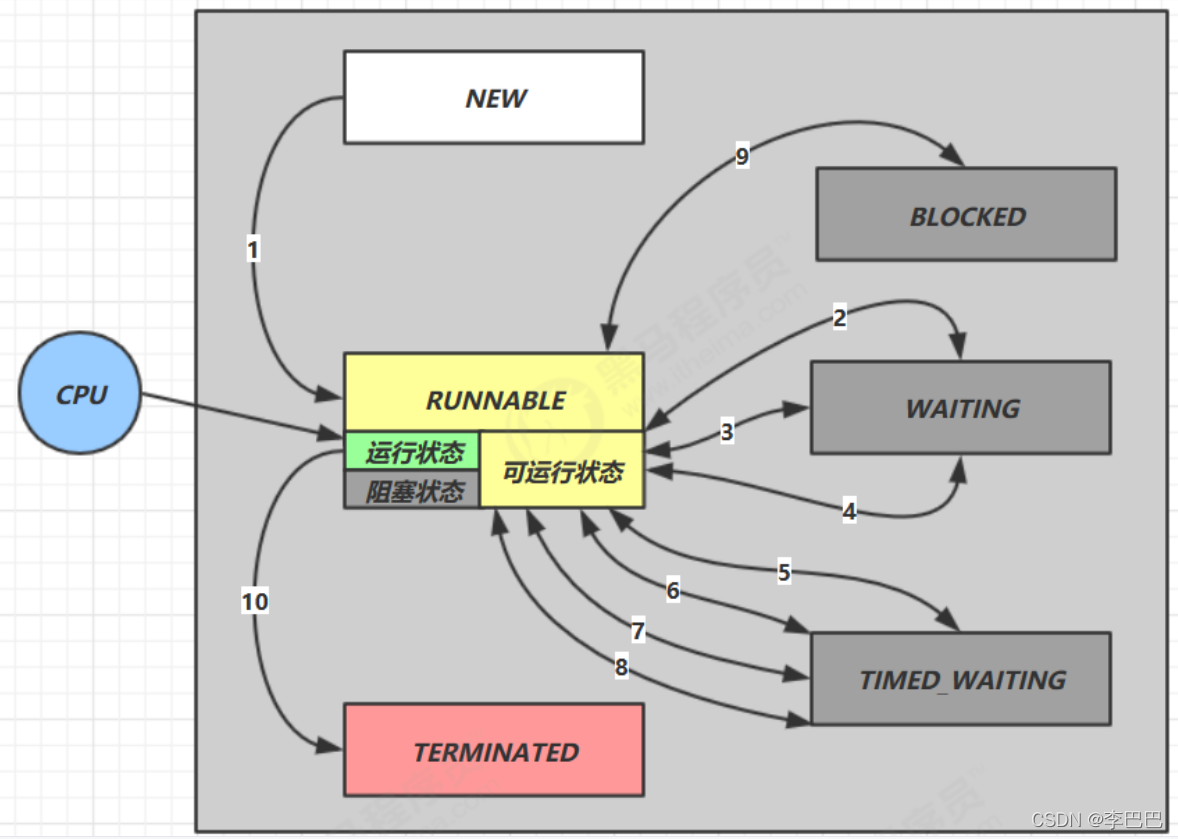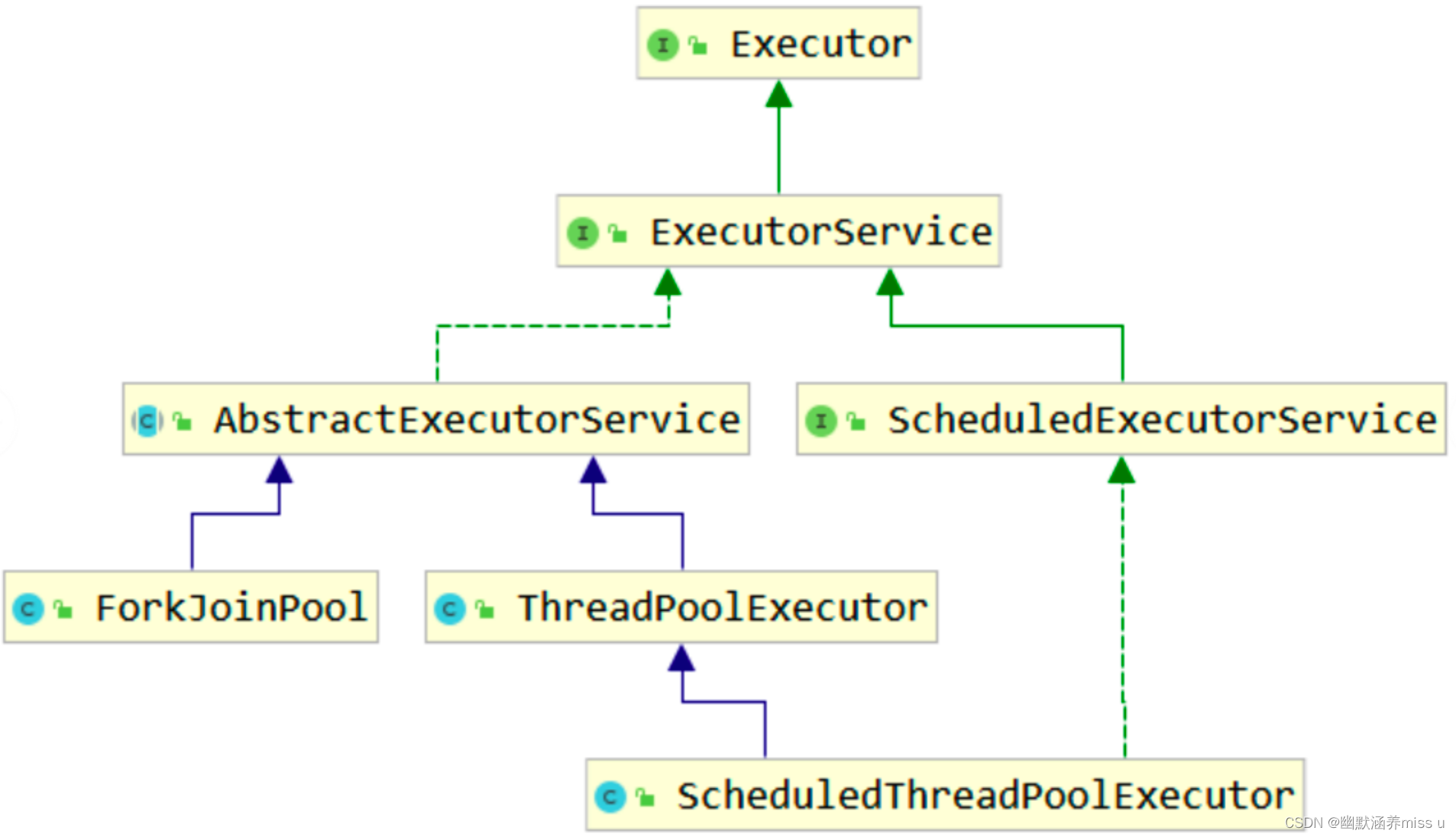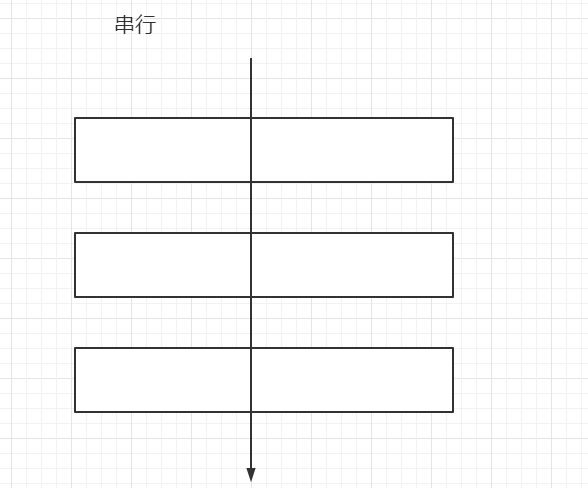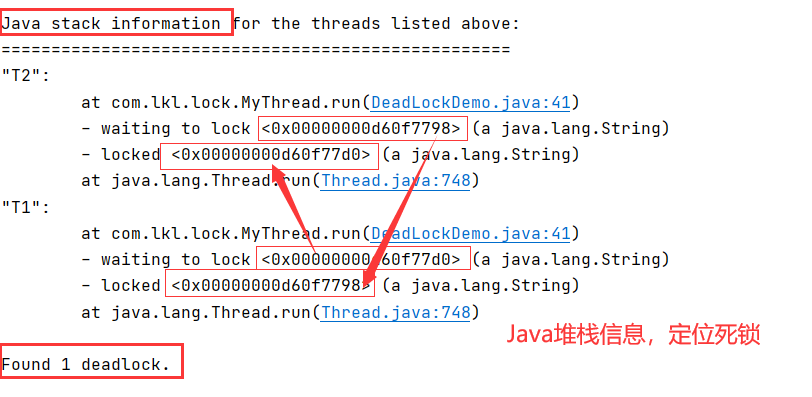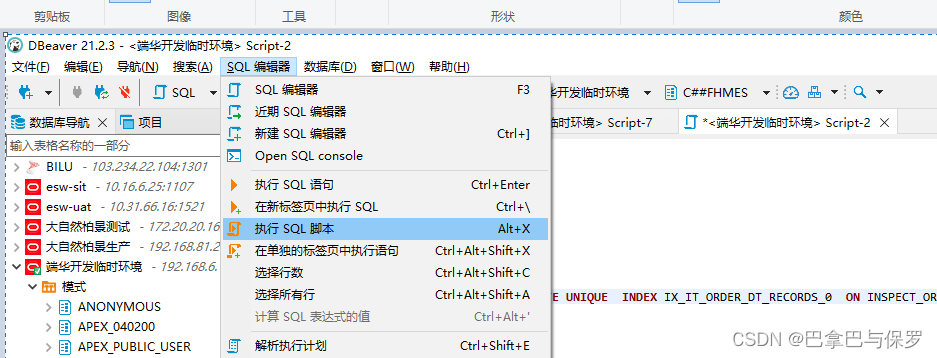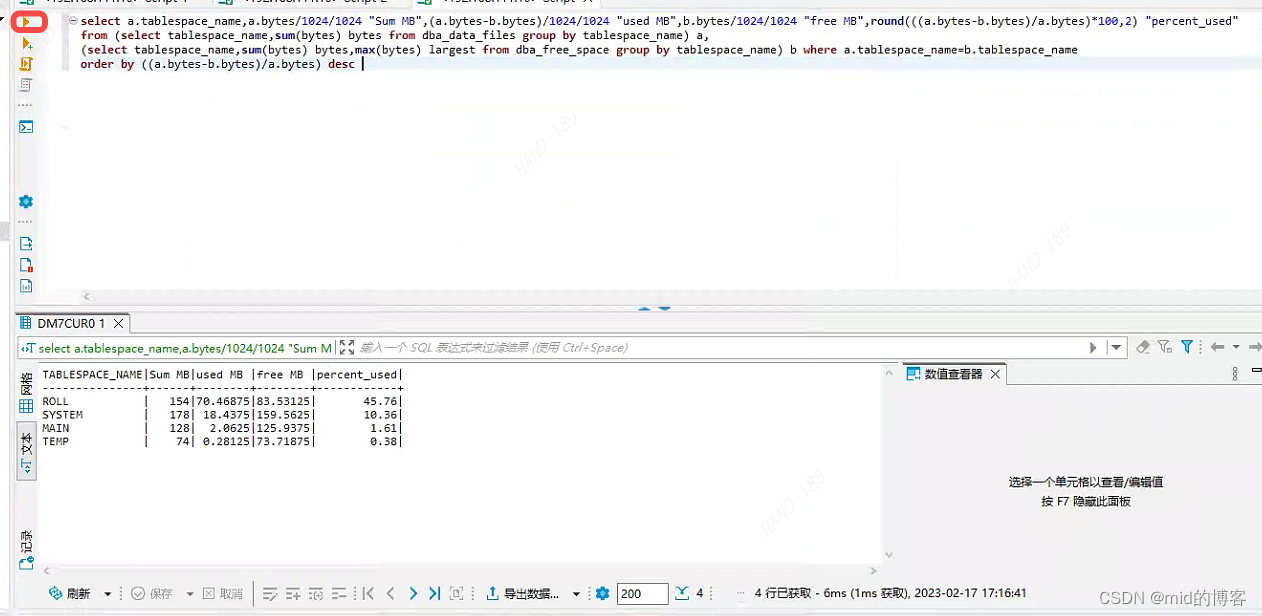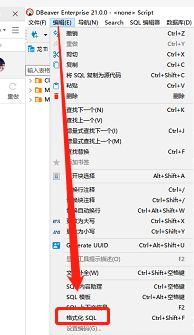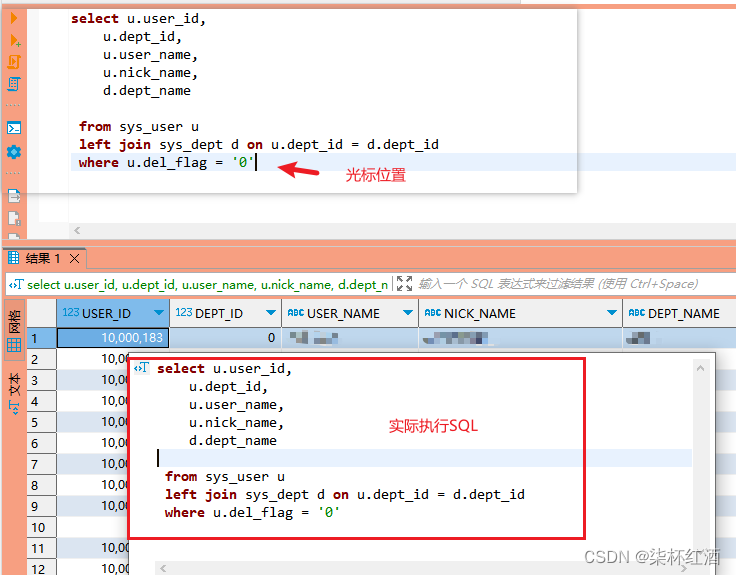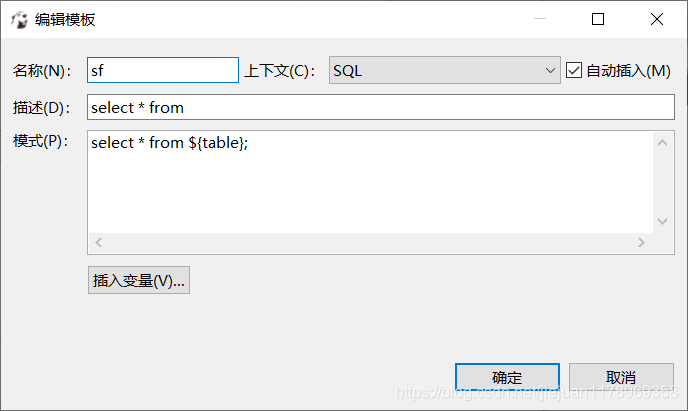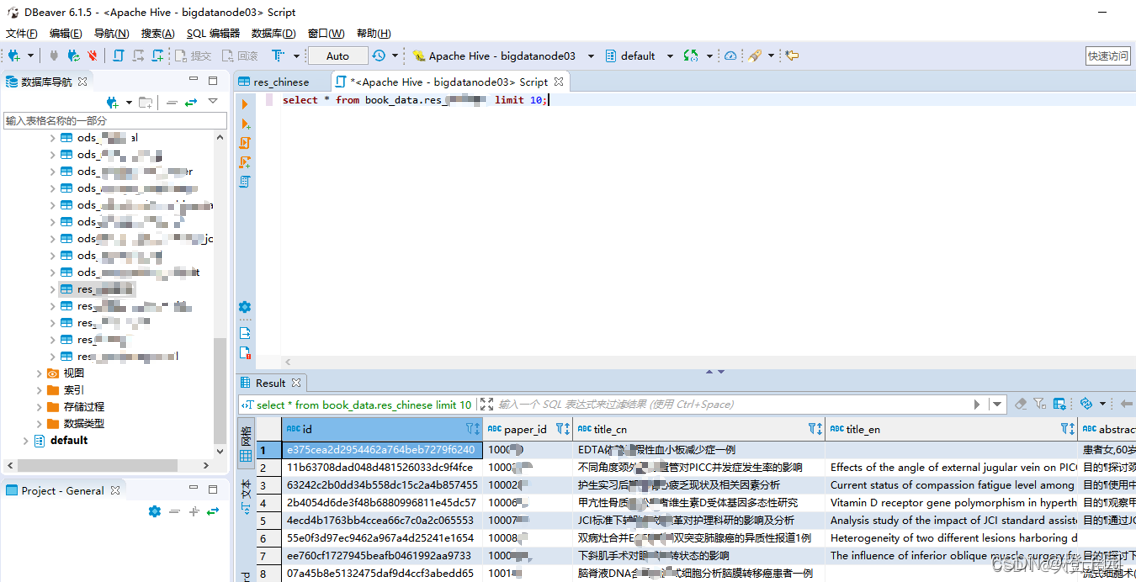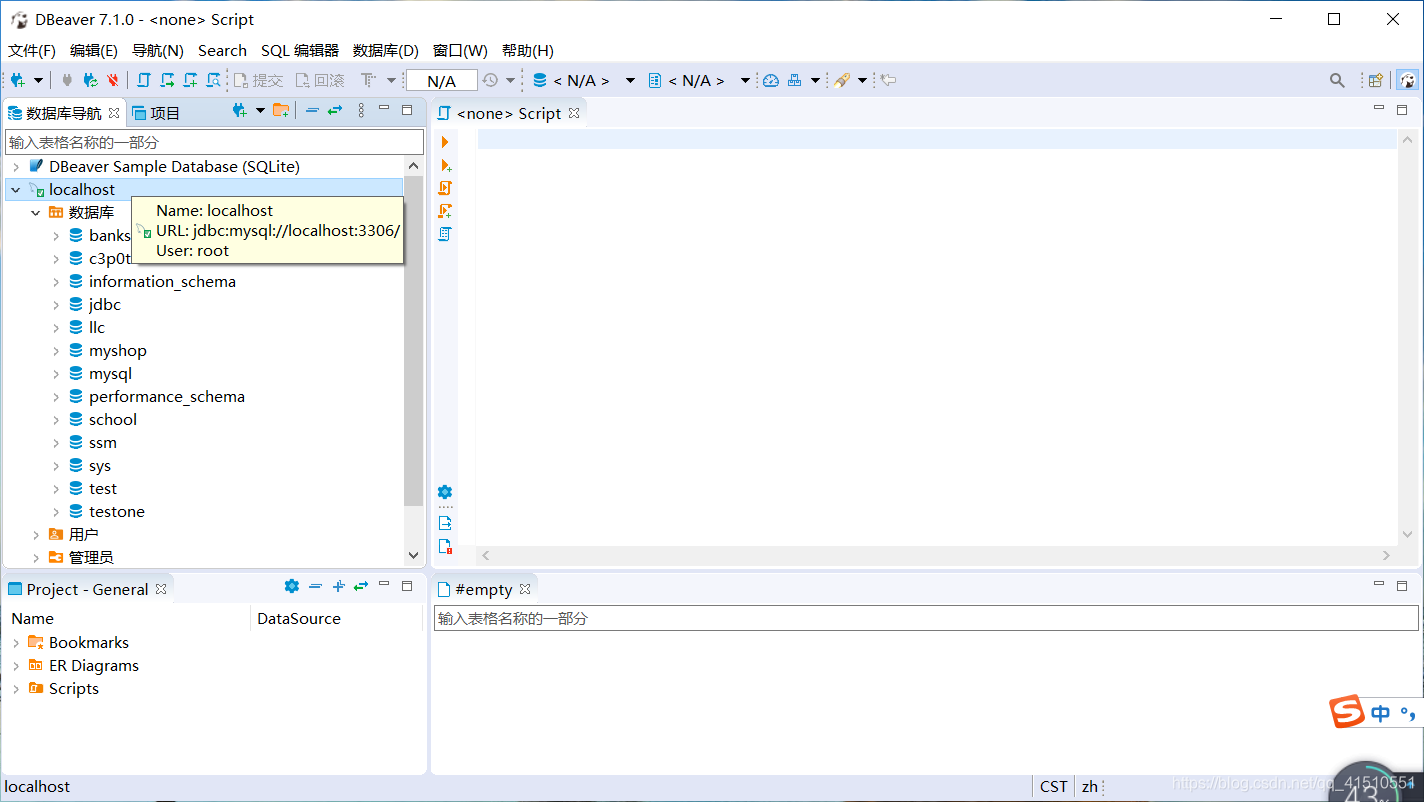该笔记大部分搬运B站遇见狂神说的javaJUC,顺便把图文合并记录,便于回顾
视频地址:【狂神说Java】JUC并发编程最新版通俗易懂_哔哩哔哩_bilibili记得三连
目录
1.什么是JUC?
2.线程进程和程序
3.Lock锁(重点)
4.生产者和消费者问题!
5.八锁现象
6.集合安全问题
7.Callable (简单)
8.常用辅助类(必会)
9.读写锁
10.阻塞队列
11.线程池(重点)
12.四大函数式接口(必须掌握)
13.Stream流式计算
14.ForkJoin
15.异步回调
16.JMM
1.什么是JUC?
JUC是指javaUtil包中的三个操作线程的包!

2.线程进程和程序
程序(Program):是一个静态的概念,一般对应于操作系统中的一个可执行的文件
,比如:我们要启动酷狗听音乐,则对应酷狗可执行程序。当我们双击酷狗,则加载
程序到内存中,开始执行该程序,于是产生了"进程".
进程:执行中的程序叫做进程(Process),是一个动态的概念。现代的操作系统都可以同时启动多个进程。比如:我们在用酷狗听音乐,也可以使用wps写文档,也可以同时用浏览器查看网页。可以通过任务管理器查看当前的进程.
线程:是进程的一个执行路径,一个进程中至少有一个线程,进程中的多个线程共享进程的资源。
java默认有两个线程:main(主)现场和GC(垃圾回收)线程
提问:java真的可以开启线程吗?开启不了!
public synchronized void start() {/*** This method is not invoked for the main method thread or "system"* group threads created/set up by the VM. Any new functionality added* to this method in the future may have to also be added to the VM.** A zero status value corresponds to state "NEW".*/if (threadStatus != 0)throw new IllegalThreadStateException();/* Notify the group that this thread is about to be started* so that it can be added to the group's list of threads* and the group's unstarted count can be decremented. */group.add(this);boolean started = false;try {start0();started = true;} finally {try {if (!started) {group.threadStartFailed(this);}} catch (Throwable ignore) {/* do nothing. If start0 threw a Throwable thenit will be passed up the call stack */}}}//这是一个C++底层,Java是没有权限操作底层硬件的private native void start0();
Java是没有权限去开启线程、操作硬件的,这是一个native的一个本地方法,它调用的底层的C++代码。
并发、并行
并发: 多线程操作同一个资源。
- CPU 只有一核,模拟出来多条线程,天下武功,唯快不破。那么我们就可以使用CPU快速交替,来模拟多线程。
并行: 多个人(CPU内核)一起行走(运行)
- CPU多核,多个线程可以同时执行。 我们可以使用线程池!
public class Test1 {public static void main(String[] args) {//获取cpu的核数System.out.println(Runtime.getRuntime().availableProcessors());}
}
并发编程的本质:充分利用CPU的资源!
线程有几个状态?
线程的状态:6个状态
public enum State {/*** Thread state for a thread which has not yet started.*///运行(新生,就绪)NEW,/*** Thread state for a runnable thread. A thread in the runnable* state is executing in the Java virtual machine but it may* be waiting for other resources from the operating system* such as processor.*///运行RUNNABLE,/*** Thread state for a thread blocked waiting for a monitor lock.* A thread in the blocked state is waiting for a monitor lock* to enter a synchronized block/method or* reenter a synchronized block/method after calling* {@link Object#wait() Object.wait}.*///阻塞BLOCKED,/*** Thread state for a waiting thread.* A thread is in the waiting state due to calling one of the* following methods:* <ul>* <li>{@link Object#wait() Object.wait} with no timeout</li>* <li>{@link #join() Thread.join} with no timeout</li>* <li>{@link LockSupport#park() LockSupport.park}</li>* </ul>** <p>A thread in the waiting state is waiting for another thread to* perform a particular action.** For example, a thread that has called <tt>Object.wait()</tt>* on an object is waiting for another thread to call* <tt>Object.notify()</tt> or <tt>Object.notifyAll()</tt> on* that object. A thread that has called <tt>Thread.join()</tt>* is waiting for a specified thread to terminate.*///等待WAITING,/*** Thread state for a waiting thread with a specified waiting time.* A thread is in the timed waiting state due to calling one of* the following methods with a specified positive waiting time:* <ul>* <li>{@link #sleep Thread.sleep}</li>* <li>{@link Object#wait(long) Object.wait} with timeout</li>* <li>{@link #join(long) Thread.join} with timeout</li>* <li>{@link LockSupport#parkNanos LockSupport.parkNanos}</li>* <li>{@link LockSupport#parkUntil LockSupport.parkUntil}</li>* </ul>*///超时等待TIMED_WAITING,/*** Thread state for a terminated thread.* The thread has completed execution.*///终止TERMINATED;}
wait/sleep的区别?
1、来自不同的类
wait => Object
sleep => Thread
一般情况企业中使用休眠是:
TimeUnit.DAYS.sleep(1); //休眠1天
TimeUnit.SECONDS.sleep(1); //休眠1s
2、关于锁的释放
wait 释放锁睡;
sleep 抱着锁睡;
3、使用的范围是不同的
wait 必须在同步代码块中;
sleep 可以在任何地方睡;
4、是否需要捕获异常
wait是不需要捕获异常(中断异常除外,所有线程都有中断异常);
sleep必须要捕获异常;
3.Lock锁(重点)
传统:synchronized
package com.test.demo;/*** 基本的卖票例子* 记住:线程就是一个单独的资源类,没用任何的附属操作!*/
public class Demo01{public static void main(String[] args) {//多线程操作Ticket ticket = new Ticket();new Thread(()-> { for (int i = 0; i < 60; i++) ticket.sale(); },"A").start();new Thread(()-> { for (int i = 0; i < 60; i++) ticket.sale(); },"B").start();new Thread(()-> { for (int i = 0; i < 60; i++) ticket.sale(); },"C").start();new Thread(()-> { for (int i = 0; i < 60; i++) ticket.sale(); },"D").start();}
}//资源类
class Ticket{private static int number=50;//卖票方式public synchronized void sale(){if (number>0){System.out.println(Thread.currentThread().getName() + "购买了第" + (number--) + "张票,剩余票数为"+number);}}
}Lock接口



公平锁:十分公平,必须先来后到~
非公平锁:十分不公平,可以插队(默认为非公平锁).
package com.test.demo;import java.util.concurrent.locks.Lock;
import java.util.concurrent.locks.ReentrantLock;/*** 基本的卖票例子* 记住:线程就是一个单独的资源类,没用任何的附属操作!*/
public class Demo01{public static void main(String[] args) {//多线程操作Ticket ticket = new Ticket();new Thread(()-> { for (int i = 0; i < 60; i++) ticket.sale(); },"A").start();new Thread(()-> { for (int i = 0; i < 60; i++) ticket.sale(); },"B").start();new Thread(()-> { for (int i = 0; i < 60; i++) ticket.sale(); },"C").start();new Thread(()-> { for (int i = 0; i < 60; i++) ticket.sale(); },"D").start();}
}//资源类
class Ticket{private static int number=50;Lock lock= new ReentrantLock();//卖票方式public void sale(){//加锁lock.lock();try {if (number>0){System.out.println(Thread.currentThread().getName() + "购买了第" + (number--) + "张票,剩余票数为"+number);}} finally {//解锁lock.unlock();}}
}synchronized锁与Lock锁的区别
- synchronized是内置的java关键字而Lock是一个接口
- synchronized无法判断获取锁的状态,Lock可以判断是否获取到了锁
- synchronized会自动释放锁,Lock必须要手动释放锁!否则会造成死锁.
- synchronized 线程1(获得锁,阻塞),线程2(等待,傻傻的等);Lock锁就不会一直等下去
- synchronized 可重入锁 不可以中断的 非公平,Lock 可重入锁 可以判断的 非公平(可以设置)
- synchronized 适合锁少量同步代码,Lock适合锁大量同步代码.
锁是什么?如何判断锁的是谁?
个人理解:锁是一种用于解决安全的机制,java中锁一般都是锁的对象,或者锁的是需要进行增删改的属性或发方法.
4.生产者和消费者问题!
synchronized版
package JUC.PC;public class A {public static void main(String[] args) {Data data = new Data();new Thread(()->{try {for (int i = 0; i < 20; i++) {data.Production();}} catch (InterruptedException e) {e.printStackTrace();}},"A").start();new Thread(()->{try {for (int i = 0; i < 20; i++) {data.Consumption();}} catch (InterruptedException e) {e.printStackTrace();}},"B").start();}
}//资源类
class Data {private int number = 0;//生产public synchronized void Production() throws InterruptedException {if (number != 0) {this.wait();}number++;System.out.println(Thread.currentThread().getName()+"线程生产+1,目前总数"+number);this.notifyAll();}//消费public synchronized void Consumption() throws InterruptedException {if (number==0){this.wait();}number--;System.out.println(Thread.currentThread().getName()+"线程消费-1,目前总数"+number);this.notifyAll();}
}
如果有ABCD4个线程则会出现问题!虚假唤醒!

解决方案:将if改为while即可
package JUC.PC;public class A {public static void main(String[] args) {Data data = new Data();new Thread(() -> {try {for (int i = 0; i < 20; i++) {data.Production();}} catch (InterruptedException e) {e.printStackTrace();}}, "A").start();new Thread(() -> {try {for (int i = 0; i < 20; i++) {data.Consumption();}} catch (InterruptedException e) {e.printStackTrace();}}, "B").start();new Thread(() -> {try {for (int i = 0; i < 20; i++) {data.Production();}} catch (InterruptedException e) {e.printStackTrace();}}, "C").start();new Thread(() -> {try {for (int i = 0; i < 20; i++) {data.Consumption();}} catch (InterruptedException e) {e.printStackTrace();}}, "D").start();}
}//资源类
class Data {private int number = 0;//生产public synchronized void Production() throws InterruptedException {while (number != 0) {this.wait();}number++;System.out.println(Thread.currentThread().getName() + "线程生产+1,目前总数" + number);this.notifyAll();}//消费public synchronized void Consumption() throws InterruptedException {while (number == 0) {this.wait();}number--;System.out.println(Thread.currentThread().getName() + "线程消费-1,目前总数" + number);this.notifyAll();}
}
JUC版的生产者和消费者问题


package JUC.PC;import java.lang.management.LockInfo;
import java.util.concurrent.locks.Condition;
import java.util.concurrent.locks.Lock;
import java.util.concurrent.locks.ReentrantLock;public class A {public static void main(String[] args) {Data data = new Data();new Thread(() -> {try {for (int i = 0; i < 20; i++) {data.Production();}} catch (InterruptedException e) {e.printStackTrace();}}, "A").start();new Thread(() -> {try {for (int i = 0; i < 20; i++) {data.Consumption();}} catch (InterruptedException e) {e.printStackTrace();}}, "B").start();new Thread(() -> {try {for (int i = 0; i < 20; i++) {data.Production();}} catch (InterruptedException e) {e.printStackTrace();}}, "C").start();new Thread(() -> {try {for (int i = 0; i < 20; i++) {data.Consumption();}} catch (InterruptedException e) {e.printStackTrace();}}, "D").start();}
}//资源类
class Data {private int number = 0;Lock reentrantLock = new ReentrantLock();Condition condition = reentrantLock.newCondition();//生产public void Production() throws InterruptedException {try {reentrantLock.lock();while (number != 0) {condition.await();}number++;System.out.println(Thread.currentThread().getName() + "线程生产+1,目前总数" + number);condition.signalAll();} finally {reentrantLock.unlock();}}//消费public void Consumption() throws InterruptedException {try {reentrantLock.lock();while (number == 0) {condition.await();}number--;System.out.println(Thread.currentThread().getName() + "线程消费-1,目前总数" + number);condition.signalAll();} finally {reentrantLock.unlock();}}
}
任何一个新技术,绝不仅仅只是覆盖了原来的技术,一定有它的优势和补充了原来的技术!
Condition 精准通知和唤醒线程

可以定义多个监视器进行精准通知如:
package JUC.PC;import java.util.concurrent.locks.Condition;
import java.util.concurrent.locks.Lock;
import java.util.concurrent.locks.ReentrantLock;public class B {public static void main(String[] args) {Data01 data01 = new Data01();new Thread(() -> {for (int i = 0; i < 10; i++) {data01.printA();}}, "A").start();new Thread(() -> {for (int i = 0; i < 10; i++) {data01.printB();}}, "B").start();new Thread(() -> {for (int i = 0; i < 10; i++) {data01.printC();}}, "C").start();new Thread(() -> {for (int i = 0; i < 10; i++) {data01.printD();}}, "D").start();}
}class Data01 {//可重入锁private final Lock lock = new ReentrantLock();//监视器private final Condition condition1 = lock.newCondition();private final Condition condition2 = lock.newCondition();private final Condition condition3 = lock.newCondition();private final Condition condition4 = lock.newCondition();//物品数量private int count = 0;//生产public void printA() {lock.lock();try {while (count != 0) {//等待condition1.await();}count++;System.out.println(Thread.currentThread().getName() + "生产物品数量+1物品还剩" + count + "个,通知B消费");//唤醒Bcondition2.signal();} catch (InterruptedException e) {e.printStackTrace();} finally {lock.unlock();}}//消费public void printB() {lock.lock();try {while (count <= 0) {condition2.await();}count--;System.out.println(Thread.currentThread().getName() + "消费物品数量-1物品还剩" + count + "个,通知C生产");//通知Ccondition3.signal();} catch (Exception e) {e.printStackTrace();} finally {lock.unlock();}}//生产public void printC() {try {lock.lock();while (count != 0) {//等待condition3.await();}count++;System.out.println(Thread.currentThread().getName() + "生产物品数量+1物品还剩" + count + "个,通知D消费");//唤醒Dcondition4.signal();} catch (InterruptedException e) {e.printStackTrace();} finally {lock.unlock();}}//消费public void printD() {lock.lock();try {while (count <= 0) {condition4.await();}count--;System.out.println(Thread.currentThread().getName() + "消费物品数量-1物品还剩" + count + "个,通知A生产");//通知Acondition1.signal();} catch (Exception e) {e.printStackTrace();} finally {lock.unlock();}}
}
5.八锁现象
如何判断锁的是什么?
锁对象或class对象!
问题1:在标准情况下,两个线程是先发短信还是先打电话?
package JUC.Lock8;import java.util.concurrent.TimeUnit;/*** 8锁,就是关于锁的八个问题* 1.在标准情况下,两个线程是先发短信还是先打电话? 先发短信*/
public class Test1 {public static void main(String[] args) throws InterruptedException {Phone phone = new Phone();new Thread(() -> {phone.sendSms();}, "A").start();TimeUnit.SECONDS.sleep(1);new Thread(() -> {phone.call();}, "B").start();}
}class Phone {//发短信public synchronized void sendSms() {System.out.println("发短信中...");}//打电话public synchronized void call() {System.out.println("打电话中...");}
}
问题2:在sendSms方法延迟了4秒后的情况下,两个线程是先发短信还是先打电话?
package JUC.Lock8;import java.util.concurrent.TimeUnit;/*** 8锁,就是关于锁的八个问题* 1.在标准情况下,两个线程是先发短信还是先打电话? 先发短信* 2.在sendSms方法延迟了4秒后的情况下,两个线程是先发短信还是先打电话? 先发短信,因为两个方法都是同一个对象所以代表着谁先拿到锁谁就先执行*/
public class Test1 {public static void main(String[] args) throws InterruptedException {Phone phone = new Phone();new Thread(() -> {try {phone.sendSms();} catch (InterruptedException e) {e.printStackTrace();}}, "A").start();TimeUnit.SECONDS.sleep(1);new Thread(() -> {phone.call();}, "B").start();}
}class Phone {//发短信 public synchronized void sendSms() throws InterruptedException {TimeUnit.SECONDS.sleep(4);System.out.println("发短信中...");}//打电话public synchronized void call() {System.out.println("打电话中...");}}
问题3:这里输出发短信还是hello?
package JUC.Lock8;import java.util.concurrent.TimeUnit;/*** 8锁,就是关于锁的八个问题* 1.在标准情况下,两个线程是先发短信还是先打电话? 先发短信* 2.在sendSms方法延迟了4秒后的情况下,两个线程是先发短信还是先打电话? 先发短信,因为两个方法都是同一个对象所以代表着谁先拿到锁谁就先执行* 3.这里输出发短信还是hello? hello 因为着hello这个方法并没有上锁,且发短信的方法以及拉到了锁但是需要睡眠4秒所以是hello*/
public class Test1 {public static void main(String[] args) throws InterruptedException {Phone phone = new Phone();new Thread(() -> {try {phone.sendSms();} catch (InterruptedException e) {e.printStackTrace();}}, "A").start();TimeUnit.SECONDS.sleep(1);new Thread(() -> {phone.hello();}, "B").start();}
}class Phone {//发短信public synchronized void sendSms() throws InterruptedException {TimeUnit.SECONDS.sleep(4);System.out.println("发短信中...");}//打电话public synchronized void call() {System.out.println("打电话中...");}public void hello(){System.out.println("hello");}
}
问题四:有两个对象先执行发短信还是打电话?
package JUC.Lock8;import java.util.concurrent.TimeUnit;/*** 8锁,就是关于锁的八个问题* 1.在标准情况下,两个线程是先发短信还是先打电话? 先发短信* 2.在sendSms方法延迟了4秒后的情况下,两个线程是先发短信还是先打电话? 先发短信,因为两个方法都是同一个对象所以代表着谁先拿到锁谁就先执行* 3.这里输出发短信还是hello? hello 因为着hello这个方法并没有上锁,且发短信的方法以及拉到了锁但是需要睡眠4秒所以是hello* 4.有两个对象先执行发短信还是打电话? 打电话,应为这里有了两个对象将不在受锁的影响,而sendSms方法中又睡眠的4秒所以是先打电话*/
public class Test1 {public static void main(String[] args) throws InterruptedException {//两个对象Phone phone = new Phone();Phone phone01 = new Phone();new Thread(() -> {try {phone.sendSms();} catch (InterruptedException e) {e.printStackTrace();}}, "A").start();TimeUnit.SECONDS.sleep(1);new Thread(() -> {phone01.call();}, "B").start();}
}class Phone {//发短信public synchronized void sendSms() throws InterruptedException {TimeUnit.SECONDS.sleep(4);System.out.println("发短信中...");}//打电话public synchronized void call() {System.out.println("打电话中...");}
}
5.增加两个静态同步方法,只有一个对象,先发短信还是先打电话?
package JUC.Lock8;import java.util.concurrent.TimeUnit;/*** 8锁,就是关于锁的八个问题* 5.增加两个静态同步方法,只有一个对象,先发短信还是先打电话? 发短信,因为静态的方法从属于类则锁锁的就是类了,而sendSms短信是最先拿到锁的*/
public class Test2 {public static void main(String[] args) throws InterruptedException {//两个对象Phone phone = new Phone();new Thread(() -> {try {phone.sendSms();} catch (InterruptedException e) {e.printStackTrace();}}, "A").start();TimeUnit.SECONDS.sleep(1);new Thread(() -> {phone.call();}, "B").start();}
}class Phone {//发短信public static synchronized void sendSms() throws InterruptedException {TimeUnit.SECONDS.sleep(4);System.out.println("发短信中...");}//打电话public static synchronized void call() {System.out.println("打电话中...");}
}
6.增加两个静态同步方法,两个个对象,先发短信还是先打电话?
package JUC.Lock8;import java.util.concurrent.TimeUnit;/*** 8锁,就是关于锁的八个问题* 6.增加两个静态同步方法,两个个对象,先发短信还是先打电话? 发短信,因为静态的方法从属于类则锁锁的就是类了,而sendSms短信是最先拿到锁的*/
public class Test3 {public static void main(String[] args) throws InterruptedException {//两个对象Phone phone = new Phone();Phone phone02 = new Phone();new Thread(() -> {try {phone.sendSms();} catch (InterruptedException e) {e.printStackTrace();}}, "A").start();TimeUnit.SECONDS.sleep(1);new Thread(() -> {phone02.call();}, "B").start();}
}class Phone {//发短信public static synchronized void sendSms() throws InterruptedException {TimeUnit.SECONDS.sleep(4);System.out.println("发短信中...");}//打电话public static synchronized void call() {System.out.println("打电话中...");}
}
7.一个静态同步方法,一个非静态同步方法,只有一个对象,先发短信还是先打电话?
package JUC.Lock8;import java.util.concurrent.TimeUnit;/*** 8锁,就是关于锁的八个问题* 7.一个静态同步方法,一个非静态同步方法,只有一个对象,先发短信还是先打电话? 打电话,因为一个锁的是class一个锁的是对象,但是发短信会延迟4秒而打电话只延迟一秒所以是打电话.*/
public class Test4 {public static void main(String[] args) throws InterruptedException {//两个对象Phone phone = new Phone();new Thread(() -> {try {phone.sendSms();} catch (InterruptedException e) {e.printStackTrace();}}, "A").start();TimeUnit.SECONDS.sleep(1);new Thread(() -> {phone.call();}, "B").start();}
}class Phone {//发短信public static synchronized void sendSms() throws InterruptedException {TimeUnit.SECONDS.sleep(4);System.out.println("发短信中...");}//打电话public synchronized void call() {System.out.println("打电话中...");}
}
8. 一个静态同步方法,一个非静态同步方法,两个对象,先发短信还是先打电话?
package JUC.Lock8;import java.util.concurrent.TimeUnit;/*** 8锁,就是关于锁的八个问题* 8.一个静态同步方法,一个非静态同步方法,两个对象,先发短信还是先打电话? 打电话,因为一个锁的是class一个锁的是对象,但是发短信会延迟4秒而打电话只延迟一秒所以是打电话.*/
public class Test4 {public static void main(String[] args) throws InterruptedException {//两个对象Phone phone = new Phone();Phone phone02 = new Phone();new Thread(() -> {try {phone.sendSms();} catch (InterruptedException e) {e.printStackTrace();}}, "A").start();TimeUnit.SECONDS.sleep(1);new Thread(() -> {phone02.call();}, "B").start();}
}class Phone {//发短信public static synchronized void sendSms() throws InterruptedException {TimeUnit.SECONDS.sleep(4);System.out.println("发短信中...");}//打电话public synchronized void call() {System.out.println("打电话中...");}
}
小结:
- 如果是非静态的synchronized是锁的调用它的对象!
- 如果为静态的synchronized是锁的是Class类模板!
6.集合安全问题
List
当在单线程中List是安全的,但在并发中ArrayList是不安全的如:
package JUC.List;import java.util.ArrayList;
import java.util.List;
import java.util.UUID;public class TestList {public static void main(String[] args) {List<String> list = new ArrayList<>();for (int i = 1; i <= 100; i++) {new Thread(()->{list.add(UUID.randomUUID().toString().substring(0, 10));System.out.println(list);},String.valueOf(i)).start();}}
}
就会出现了:ConcurrentModificationException(并发修改异常),解决方案:
- 使用synchronized给ArrayList的add方法加锁(ArrayList是1.2出来的)
- 使用List的子类Vector集合类着里面加入了synchronized(Vector是1.0出来的)
- 使用Collections.synchronizedList()方法将集合转换为安全的集合
- 使用CopyOnWriteArrayList类在java并发包concurrent下!
这里推荐使用CopyOnWriteArrayList因为:
- 不同于Vector,它并不是锁的对象,而是锁了进行修改的数组,提高了效率
- 它的add方法对传入的数据进行了Copy然后才进行保存,提高了安全。
package JUC.List;import java.util.*;
import java.util.concurrent.CopyOnWriteArrayList;public class TestList {public static void main(String[] args) {List<String> list = new CopyOnWriteArrayList<>();for (int i = 1; i <= 100; i++) {new Thread(()->{list.add(UUID.randomUUID().toString().substring(0, 10));System.out.println(list);},String.valueOf(i)).start();}}
}

Set
package JUC.List;import java.util.*;//同理可得:ConcurrentModificationException(并发修改异常)
public class TestList {public static void main(String[] args) {Set<String> set = new HashSet<>();for (int i = 1; i <= 100; i++) {new Thread(()->{set.add(UUID.randomUUID().toString().substring(0, 10));System.out.println(set);},String.valueOf(i)).start();}}
}
解决方案:
- 使用Collections.synchronizedSet()方法将集合转换为安全的set集合!
- 使用ConcurrentSkipListSet类在java并发包concurrent下!
HashSet的底层就是使用了HashMap的键去存储的!同理ConcurrentSkipListSet类的底层是使用了ConcurrentSkipListMap的键进行存储!
Map
面试题:
Map是这样用的吗?
HashMap<Object, Object> objectObjectHashMap = new HashMap<>();默认等价什么?

默认的容量为16默认的加载因子是0.75
同时HashMap也是不安全的
package JUC.List;import java.util.HashMap;
import java.util.UUID;//同理会报:ConcurrentModificationException(并发修改异常)
public class TestMap {public static void main(String[] args) {HashMap<Object, Object> hashMap = new HashMap<>();for (int i = 0; i < 100; i++) {new Thread(()->{hashMap.put(Thread.currentThread().getName(), UUID.randomUUID().toString().substring(0, 10));System.out.println(hashMap);}).start();}}
}
解决方案:
- 使用Collections.synchronizedSortedMap()把Map转换为安全的集合
- 使用ConcurrentHashMap类在java并发包concurrent下!

7.Callable (简单)
Callable多线程的第三种实现方式:

- 表示有返回值
- 可以抛出异常
- 方法不同,run()/call()
 而这样如何去调用Thread进行启动Callable线程了?
而这样如何去调用Thread进行启动Callable线程了?
这里就有一个实现了Runnable的类叫做FutureTask类(适配器模式),它去实现了Runnable接口可以通过它去进行调用Thread.

如:
package JUC.Callable;import java.util.concurrent.Callable;
import java.util.concurrent.ExecutionException;
import java.util.concurrent.FutureTask;public class TestCallable {public static void main(String[] args) throws ExecutionException, InterruptedException {//创建适配器FutureTask<Integer> futureTask = new FutureTask<>(new MyCallable());//因为FutureTask实现了RunnableFuture接口所以可以通过Thread启动线程new Thread(futureTask,"A").start();//获取线程返回值System.out.println(futureTask.get());}
}class MyCallable implements Callable<Integer> {/*** Computes a result, or throws an exception if unable to do so.** @return computed result* @throws Exception if unable to compute a result*/@Overridepublic Integer call() throws Exception {System.out.println("你好");return 1024;}
}
细节问题:
- 有缓存!
- 接口可能会遭到堵塞,需要等待线程执行完毕!
8.常用辅助类(必会)
CountDownLatch类:

该类可以用作一个减法计数器去执行实例:
package JUC.AuxiliaryClass;import java.util.concurrent.CountDownLatch;//计数器
public class TestCountDownLatch {public static void main(String[] args) throws InterruptedException {//总数是6CountDownLatch countDownLatch = new CountDownLatch(6);for (int i = 0; i < 6; i++) {new Thread(() -> {System.out.println(Thread.currentThread().getName()+"走了");countDownLatch.countDown();//表示数量-1},String.valueOf(i)).start();}//等待计数器归零在往下执行!countDownLatch.await();System.out.println("关门!");}
}
常用方法:
- countDownLatch.countDown();//表示数量-1
- countDownLatch.await(); //等待计数器归零在往下执行!
原理:当每次有线程调用 countDown()方法则数量减一,假设数量变为0,await()方法就会被唤醒继续执行!
CyclicBarrier类

加法计数器:
package JUC.AuxiliaryClass;import java.util.concurrent.Semaphore;
import java.util.concurrent.TimeUnit;public class TestSemaphore {public static void main(String[] args) {//线程数量,停车位,限流的时候会用Semaphore semaphore = new Semaphore(3);for (int i = 0; i < 8; i++) {new Thread(()->{//acquire() 得到//release() 释放try {//得到车位semaphore.acquire();System.out.println(Thread.currentThread().getName()+"得到车位!");TimeUnit.SECONDS.sleep(2);System.out.println(Thread.currentThread().getName()+"停车两秒后离开车位!");} catch (InterruptedException e) {e.printStackTrace();}finally {//离开车位semaphore.release();}}).start();}}
}
Semaphore类

实例:
package JUC.AuxiliaryClass;import java.util.concurrent.Semaphore;
import java.util.concurrent.TimeUnit;public class TestSemaphore {public static void main(String[] args) {//线程数量,停车位,限流的时候会用Semaphore semaphore = new Semaphore(3);for (int i = 0; i < 8; i++) {new Thread(()->{//acquire() 得到//release() 释放try {//得到车位semaphore.acquire();System.out.println(Thread.currentThread().getName()+"得到车位!");TimeUnit.SECONDS.sleep(2);System.out.println(Thread.currentThread().getName()+"停车两秒后离开车位!");} catch (InterruptedException e) {e.printStackTrace();}finally {//离开车位semaphore.release();}}).start();}}
}
常用方法:
- semaphore.acquire(); //获得
- semaphore.release(); //释放
原理:使用acquire()方法获取一个资源,如果没有则等待,release()释放资源则资源+1.
作用:多个共享资源的互斥使用!并发限流,控制最大线程数!
9.读写锁
ReadWriteLock
ReadWriteLock叫做读写锁是java.util.concurrent.locks包下的,它的写锁可以进行一次只被一个线程共享的操作,读锁则可以被所有线程共享,锁已又称为,独占锁(写锁)和共享锁(读锁),如:
package JUC.Lock;import java.util.HashMap;
import java.util.concurrent.locks.ReentrantReadWriteLock;/*** 小结:* 独占锁(写锁):一次只能被一个线程占用* 共享锁(读锁):多线程可以同时占有* 读-读:可以共存!* 读-写:不能共存!* 写-写:不能共存!*/
public class TestReadWriteLock {public static void main(String[] args) {MyCacheLock myCache = new MyCacheLock();//存写的线程for (int i = 0; i < 5; i++) {int temp=i;new Thread(()->{myCache .put(String.valueOf(temp),temp);},String.valueOf(i)).start();}//读写的线程for (int i = 0; i < 5; i++) {int temp=i;new Thread(()->{myCache.get(String.valueOf(temp));},String.valueOf(i)).start();}}
}/*** 自定义缓存*/
class MyCache{private volatile HashMap<String,Object> map=new HashMap<>();//存写public void put(String key,Object value){System.out.println(Thread.currentThread().getName()+"正在写入"+key+":"+value);map.put(key,value);System.out.println(Thread.currentThread().getName()+"写入完毕");}//读取public void get(String key){System.out.println(Thread.currentThread().getName()+"正在读取"+key);Object o = map.get(key);System.out.println(Thread.currentThread().getName()+"读取完毕");}
}/*** 加锁的自定义缓存*/
class MyCacheLock{private volatile HashMap<String,Object> map=new HashMap<>();//读写锁,更加细腻度的控制private final ReentrantReadWriteLock lock=new ReentrantReadWriteLock();//存写 (存写的时候只希望有一个线程进行)public void put(String key,Object value){//上一把写锁lock.writeLock().lock();try {System.out.println(Thread.currentThread().getName()+"正在写入"+key+":"+value);map.put(key,value);System.out.println(Thread.currentThread().getName()+"写入完毕");} finally {lock.writeLock().unlock();}}//读取 (所有人都可以读)public void get(String key){lock.readLock().lock();try {System.out.println(Thread.currentThread().getName()+"正在读取"+key);Object o = map.get(key);System.out.println(Thread.currentThread().getName()+"读取完毕");} finally {lock.readLock().unlock();}}
}10.阻塞队列



BlockingQueue不是新的东西同它的老祖宗也继承了Collection接口(同时也继承了Queue队列接口))

什么情况下会使用堵塞队列?
- 多线程并发处理
- 线程池!

使用队列
四组API:
| 方式 | 抛出异常 | 有返回值,不抛出异常 | 阻塞 等待 | 超时等待 |
| 添加 | add | offer | put | offer(等待时间,等待单位) |
| 移除 | remove | poll | take | poll(等待时间,等待单位) |
| 检测队首元素 | element | peek | peek | peek |
//会抛出异常public static void test1(){ArrayBlockingQueue<Object> objects = new ArrayBlockingQueue<>(3);System.out.println(objects.add("a"));System.out.println(objects.add("b"));System.out.println(objects.add("c"));//IllegalStateException: Queue full(队列已满异常!)//System.out.println(objects.add("d"));System.out.println("===================");System.out.println(objects.remove());System.out.println(objects.remove());System.out.println(objects.remove());//NoSuchElementException(队列为空异常!)//System.out.println(objects.remove());} //有返回值.不抛出异常public static void test2(){ArrayBlockingQueue<Object> objects = new ArrayBlockingQueue<>(3);System.out.println(objects.offer("a"));System.out.println(objects.offer("b"));System.out.println(objects.offer("c"));System.out.println(objects.offer("d"));//falseSystem.out.println("===================");System.out.println(objects.poll());System.out.println(objects.poll());System.out.println(objects.poll());System.out.println(objects.poll());//null} //等待,阻塞(一直阻塞)public static void test3() throws InterruptedException {ArrayBlockingQueue<Object> arrayBlockingQueue = new ArrayBlockingQueue<>(3);arrayBlockingQueue.put("a");arrayBlockingQueue.put("b");arrayBlockingQueue.put("c");//arrayBlockingQueue.put("d");//队列没有位置了则会等待System.out.println(arrayBlockingQueue.take());System.out.println(arrayBlockingQueue.take());System.out.println(arrayBlockingQueue.take());//System.out.println(arrayBlockingQueue.take()); //队列没有元素了则会等待} //超时等待public static void test4() throws InterruptedException {ArrayBlockingQueue<Object> arrayBlockingQueue = new ArrayBlockingQueue<>(3);System.out.println(arrayBlockingQueue.offer("a"));System.out.println(arrayBlockingQueue.offer("b"));System.out.println(arrayBlockingQueue.offer("c"));System.out.println(arrayBlockingQueue.offer("d", 2, TimeUnit.SECONDS));//等待超过两秒就退出System.out.println("===================");System.out.println(arrayBlockingQueue.poll());System.out.println(arrayBlockingQueue.poll());System.out.println(arrayBlockingQueue.poll());System.out.println(arrayBlockingQueue.poll(2, TimeUnit.SECONDS));//等待超过两秒就退出}SynchronousQueue(同步队列)
没有容量,当进去一个元素必须等待取出才能再次进入元素!
package JUC.Queue;import java.util.concurrent.SynchronousQueue;
import java.util.concurrent.TimeUnit;public class TestSynchronousQueue {public static void main(String[] args) throws InterruptedException {SynchronousQueue<Object> objects = new SynchronousQueue<>();new Thread(()->{try {objects.put("a");System.out.println(Thread.currentThread().getName()+"put a");objects.put("b");System.out.println(Thread.currentThread().getName()+"put b");objects.put("c");System.out.println(Thread.currentThread().getName()+"put c");} catch (InterruptedException e) {e.printStackTrace();}},"T1").start();new Thread(()->{try {TimeUnit.SECONDS.sleep(3);System.out.println(Thread.currentThread().getName()+"->"+objects.take());TimeUnit.SECONDS.sleep(3);System.out.println(Thread.currentThread().getName()+"->"+objects.take());TimeUnit.SECONDS.sleep(3);System.out.println(Thread.currentThread().getName()+"->"+objects.take());} catch (InterruptedException e) {e.printStackTrace();}},"T2").start();}
}
11.线程池(重点)
线程池:三大方法,七大参数,四种拒绝策略
池化技术
当程序允许时需要的链接如:JDBC链接,IO链接等等他们开启或关闭会极大的耗费资源,这时则引入了一个池化技术的概念。
池化技术本质:事先准备好一些资源,要用的时候来这里取,用完了在放回去,这样就不用一直开启关闭浪费资源了.
线程池的好处:
- 降低资源消耗
- 效率大大提升
- 方便我们管理
线程复用可以控制最大并发数,管理线程!
线程池三大方法
package JUC.Queue;import java.util.concurrent.ExecutorService;
import java.util.concurrent.Executors;/*** 三大方法*/
public class TestExecutors {public static void main(String[] args) {
// ExecutorService executorService = Executors.newSingleThreadExecutor();//单个线程
// ExecutorService executorService = Executors.newFixedThreadPool(100);//固定线程池大写ExecutorService executorService = Executors.newCachedThreadPool();//可伸缩的线程池try {for (int i = 0; i < 100; i++) {executorService.execute(()->{System.out.println(Thread.currentThread().getName());});}} finally {//线程池用完一定要关闭executorService.shutdown();}}
}
七大参数
源码分析:
//单个线程 public static ExecutorService newSingleThreadExecutor() {return new FinalizableDelegatedExecutorService(new ThreadPoolExecutor(1, 1,0L, TimeUnit.MILLISECONDS,new LinkedBlockingQueue<Runnable>()));}//固定线程池大写public static ExecutorService newFixedThreadPool(int nThreads) {return new ThreadPoolExecutor(nThreads, nThreads,0L, TimeUnit.MILLISECONDS,new LinkedBlockingQueue<Runnable>());}//可伸缩的线程池public static ExecutorService newCachedThreadPool() {return new ThreadPoolExecutor(0, Integer.MAX_VALUE, //这里最大核心线程约为21亿!60L, TimeUnit.SECONDS,new SynchronousQueue<Runnable>());}//本质开启线程池调用了ThreadPoolExecutor()public ThreadPoolExecutor(int corePoolSize, //核心线程池大小int maximumPoolSize, //最大核心线程池大小long keepAliveTime, //超时了没有人调用就会释放TimeUnit unit, //超时单位BlockingQueue<Runnable> workQueue, //阻塞队列ThreadFactory threadFactory, //线程工厂,创建线程的,一般不动用RejectedExecutionHandler handler) { //拒绝策略if (corePoolSize < 0 ||maximumPoolSize <= 0 ||maximumPoolSize < corePoolSize ||keepAliveTime < 0)throw new IllegalArgumentException();if (workQueue == null || threadFactory == null || handler == null)throw new NullPointerException();this.corePoolSize = corePoolSize;this.maximumPoolSize = maximumPoolSize;this.workQueue = workQueue;this.keepAliveTime = unit.toNanos(keepAliveTime);this.threadFactory = threadFactory;this.handler = handler;} 阿里规范手册!

手动创建一个线程池
package JUC.Queue;import java.util.concurrent.*;public class TestThreadPoolExecutor {public static void main(String[] args) {/*** 四种拒绝策略* 1.new ThreadPoolExecutor.AbortPolicy() //线程满了还有线程要进入则,不做处理,直接抛出异常* 2.new ThreadPoolExecutor.CallerRunsPolicy() //那来的那里去* 3.new ThreadPoolExecutor.DiscardPolicy() //队列满了丢掉任务,直接开摆,不会抛出异常!* 4.new ThreadPoolExecutor.DiscardOldestPolicy() //队列满了,尝试去和最早的竞争,也不会抛出异常!*/ThreadPoolExecutor executor = new ThreadPoolExecutor(2,5,2,TimeUnit.SECONDS,new LinkedBlockingQueue<>(3),Executors.defaultThreadFactory(),new ThreadPoolExecutor.CallerRunsPolicy());//队列满了,尝试去和最早的竞争,也不会抛出异常!for (int i = 0; i < 19; i++) {executor.execute(()->{System.out.println(Thread.currentThread().getName()+"线程");});}}
}
四种拒绝策略
- new ThreadPoolExecutor.AbortPolicy() //线程满了还有线程要进入则,不做处理,直接抛出异常
- new ThreadPoolExecutor.CallerRunsPolicy() //那来的那里去
- new ThreadPoolExecutor.DiscardPolicy() //队列满了丢掉任务,直接开摆,不会抛出异常!
- new ThreadPoolExecutor.DiscardOldestPolicy() //队列满了,尝试去和最早的竞争,也不会抛出异常!
小结和拓展:
池的最大的线程如何去设置?
了解:IO密集型与CPU密集型
package JUC.Queue;import java.util.concurrent.*;public class TestThread {public static void main(String[] args) {/*** 最大线程到底该如何定义?* CPU密集型:CPU几核就是几 可以使用Runtime.getRuntime().availableProcessors()方法检测出电脑是几核的* IO密集型:判断程序中十分消耗资源的IO有多少个最大线程数大于它就好了(最好是它的两倍)*/new ThreadPoolExecutor(1,Runtime.getRuntime().availableProcessors(),1,TimeUnit.SECONDS,new LinkedBlockingQueue<>(3),Executors.defaultThreadFactory(),new ThreadPoolExecutor.DiscardPolicy());}
}
12.四大函数式接口(必须掌握)
新时代的程序员:lambda表达式,链式编程,函数式接口,Stream流式计算
函数式接口:只有一个方法的接口
如:
package java.lang;@FunctionalInterface
public interface Runnable {public abstract void run();
}
/*** FunctionalInterface超级多* 它简化了编程模板,在新版的框架底层大量运用* forEach(消费者类的函数式接口)*/
Function函数式接口

package JUC.FunctionInterface;import java.util.function.Function;//Function测试
public class TestFunction {public static void main(String[] args) {//使用匿名内部类表示Function<Integer, String> function = new Function<>() {@Overridepublic String apply(Integer o) {if (o!=null){return String.valueOf(o);}else {return null;}}};//使用lambda表达式优化Function<Integer,String> lambda=o->String.valueOf(o);System.out.println(lambda.apply(16));}
}
断定型接口:Predicate
package JUC.FunctionInterface;import java.util.Objects;
import java.util.function.Predicate;/*** 断定型接口:有一个输入参数返回值只能是Boolean值*/
public class TestPredicate {public static void main(String[] args) {Predicate<String> predicate = new Predicate<>() {@Overridepublic boolean test(String o) {return o.isEmpty();}};//简化Predicate<String> predicate1=(o)->{return o.isEmpty()};}
}
供给型接口:
package JUC.FunctionInterface;import java.util.function.Supplier;//供给型接口:只有返回值没有参数列表
public class TestSupplier {public static void main(String[] args) {Supplier<String> supplier = new Supplier<>() {@Overridepublic String get() {return "你好";}};//简化Supplier<String> s=()-> "你好";}
}
13.Stream流式计算
什么是Stream计算
我们一些的集合与Mysql数据库本质是用来存储数据的,计算都应该交给流来操作!

package JUC.Stream;import lombok.AllArgsConstructor;
import lombok.Data;
import lombok.NoArgsConstructor;import java.util.Arrays;
import java.util.List;
import java.util.Locale;
import java.util.stream.Stream;/*** 题目:一分钟内完成此题,并且只能用一行代码来实现* 1.ID为偶数* 2.年龄必须大于23* 3.用户名转换为大写字母,并返回* 4.用户名字母倒着排序* 5.只输出一个用户*/
public class practice<T> {public static void main(String[] args) {User user1 = new User(1,"a",21);User user2 = new User(2,"b",22);User user3 = new User(3,"c",23);User user4 = new User(4,"d",24);User user5 = new User(6,"e",25);Arrays.asList(user1, user2, user3, user4, user5).stream().filter(user -> {return user.id%2==0;}).filter(user -> { return user.age>23;}).map(user -> {return user.name.toUpperCase();}).sorted((uu1,uu2)->{return uu2.compareTo(uu1);}).limit(1).forEach(System.out::print);}}//有参,无参构造,get,set,toString方法!
@Data
@NoArgsConstructor
@AllArgsConstructor
class User{int id;String name;int age;
}
14.ForkJoin
ForkJoin
ForkJoin在JDK1.7,并发执行任务!提高效率,大数据量!
大数据:Map Reduce(把大任务拆分为小任务)

ForkJoin的特点:工作窃取
这个里面维护的都是双端队列

ForkJoin操作:


package JUC.ForkJoin;import java.util.concurrent.ExecutionException;
import java.util.concurrent.ForkJoinPool;
import java.util.concurrent.ForkJoinTask;
import java.util.stream.LongStream;//测试
public class TestTime {public static void main(String[] args) throws ExecutionException, InterruptedException {test01();//385毫秒test02();//140毫秒test03();}//普通计算public static void test01(){long sum=0L;long stare = System.currentTimeMillis();for (int i = 1; i <= 10_0000_0000; i++) {sum += i;}long end = System.currentTimeMillis();System.out.println("sun="+sum+",时间为:"+(end-stare)+"毫秒");}//使用ForkJoinpublic static void test02() throws ExecutionException, InterruptedException {long stare = System.currentTimeMillis();ForkJoinPool forkJoinPool = new ForkJoinPool();TestForkJoin task = new TestForkJoin(1L, 10_0000_0000L);ForkJoinTask<Long> submit = forkJoinPool.submit(task);//提交任务Long sum = submit.get();long end = System.currentTimeMillis();System.out.println("sun="+sum+",时间为:"+(end-stare)+"毫秒");}//使用Stream流计算public static void test03(){long stare = System.currentTimeMillis();//range表示() 而rangeClosed表示(]long sum = LongStream.rangeClosed(1L, 10_0000_0000L).parallel().reduce(0, Long::sum);long end = System.currentTimeMillis();System.out.println("sun="+sum+" 时间为:"+(end-stare)+"毫秒");}
}
package JUC.ForkJoin;import java.util.concurrent.RecursiveTask;/*** 求和计算的任务** 如何使用ForkJoin?* 1.ForkJoinPool 通过它来执行* 2.计算任务 ForkJoinPool.execute(ForkJoinTask<?> task)* 3.计算类需要继承RecursiveTask抽象类*/
public class TestForkJoin extends RecursiveTask<Long> {private final Long start;//起始值 1private final Long end;//结束的值 1990999//临界值private final Long temp=1000L;public TestForkJoin(Long start, Long end) {this.start = start;this.end = end;}/*** 计算方法* @return 计算结果*/@Overrideprotected Long compute() {if ((end-start)<temp){long sum=0L;for (Long i = start; i <= end; i++) {sum+=i;}return sum;}else {//分支合并计算使用 ForkJoinlong middle = (start+end)/ 2; //中间值TestForkJoin task1 = new TestForkJoin(start, middle);task1.fork();//拆分把任务压入线程队列TestForkJoin task2 = new TestForkJoin(middle+1, end);task2.fork();//拆分把任务压入线程队列return task1.join() + task2.join();}}
}
15.异步回调
Future设计初衷:

package JUC.Future;import java.util.concurrent.CompletableFuture;
import java.util.concurrent.ExecutionException;
/*** 异步调用:CompletableFuture*/
public class TestCompletableFuture {public static void main(String[] args) throws ExecutionException, InterruptedException {CompletableFuture<Integer> completableFuture = CompletableFuture.supplyAsync(()->{System.out.println(Thread.currentThread().getName());int i = 10/0;return 1024;});//获取执行结果completableFuture.whenComplete((t,u)->{System.out.println("t->"+ t);System.out.println("u->"+u);}).exceptionally((e)->{System.out.println(e.getMessage());return 0;});}}
16.JMM
请你谈谈你对volatile的理解
volatile是java虚拟机提供的轻量级的同步机制
- 保证可见性
- 不保证原子性
- 禁止指令重排
什么是JMM
JMM是java内存模型,不存在的东西,是概念,是约定.
关于JMM的一些同步约定:
- 线程解锁前,必须立刻把共享遍历刷回主存
- 线程加锁前,必须读取主存中的最新值到工作内存中
- 加锁和解锁都是一把锁

如:
package JUC.JMM;import java.util.concurrent.TimeUnit;public class TestJMM {private static boolean flag=true;public static void main(String[] args) throws InterruptedException {new Thread(()->{while (flag){}}).start();System.out.println("停顿!");TimeUnit.SECONDS.sleep(1);flag=false;System.out.println("修改完毕!");//这里直接循环卡死!}
}
Volatile
1.保证可见性
package JUC.JMM;import java.util.concurrent.TimeUnit;public class TestJMM {//加入volatile可以保证程序的可见性private static volatile boolean flag=true;public static void main(String[] args) throws InterruptedException {new Thread(()->{ //该线程对主内存的变化是不可见的!while (flag){}}).start();System.out.println("停顿!");TimeUnit.SECONDS.sleep(1);flag=false;System.out.println("修改完毕!");//这里直接循环卡死!}
}
2.不保证原子性
原子性:不可分割
线程A在执行任务的时候不能被打扰的,也不能被分割,要么一起成功要么一起失败
package JUC.JMM;public class TestJMM02 {//volatile不保证原子性private volatile static int flag=0;public static void add(){flag++;}public static void main(String[] args) {for (int i = 0; i < 10; i++) {new Thread(()->{for (int j = 0; j < 1000; j++) {add();}}).start();}while (Thread.activeCount()>2){Thread.yield();}System.out.println(Thread.currentThread().getName()+":"+flag);}
}
如果不加Lock和synchronized如何保证原子性?

使用原子类:
package JUC.JMM;import java.util.concurrent.atomic.AtomicInteger;public class TestJMM02 {//volatile不保证原子性private volatile static AtomicInteger flag=new AtomicInteger();public static void add(){flag.getAndIncrement();//进行+1操作}public static void main(String[] args) {for (int i = 0; i < 10; i++) {new Thread(()->{for (int j = 0; j < 1000; j++) {add();}}).start();}while (Thread.activeCount()>2){Thread.yield();}System.out.println(Thread.currentThread().getName()+":"+flag);}
}
这些原子类的底层都是直接和操作系统挂钩!在内存中修改值!Unsafe是一个很特殊的存在!
指令重排:
什么是指令重排:你写的程序计算机并不是按照你写的程序去执行的!
源代码->编译器优化的重排->指令并行也可能会重排->内存系统也会重排->执行
int x=1; //1
int y=2; //2
x=x+3; //3
y=y*x; //4我们所希望的是1234而但可能执行的时候会变成:2134,1324但不可能是4321因为处理器在进行指令重排的时候会考虑数据之间的依赖问题!
可能造成影响的结果: a,b,x.v四个值默认为0
| 线程A | 线程B |
| x=a | y=b |
| b=1 | a=2 |
正常结果:x,y都为0;但是可能由于指令重排:
| 线程A | 线程B |
| b=1 | a=2 |
| x=a | y=b |
指令重排可能导致的诡异结果:x=2,y=1.
Volatile则可以避免指令重排
使其加入了内存屏障,作用:
1.保证特定操作的执行顺序
2.可以保证某些内存表变量的可见性(利用这些特性Volatile实现了可见性)

Volatile可以保证,可见性,不保证原子性,由于内存屏障禁止了指令重排.
Volatile在单例模式下使用的最多!




